Five black and white photos from my everyday life. Day four: labyrinth.
How I longed to run into this mess of twisting branches and climb through from one end to the other. But I’m too old. And I still have my pride.
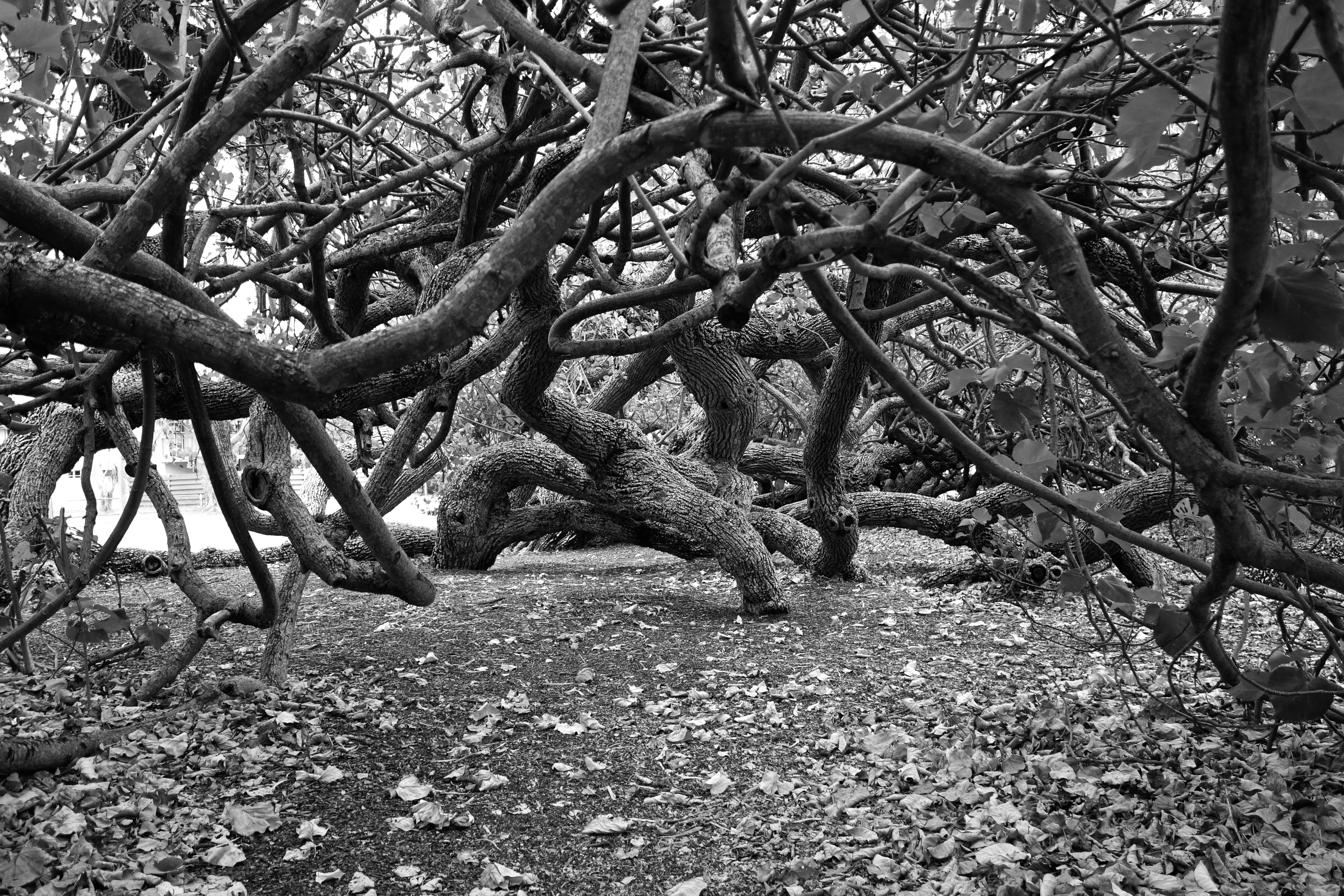

A quiet place.
Five black and white photos from my everyday life. Day four: labyrinth.
How I longed to run into this mess of twisting branches and climb through from one end to the other. But I’m too old. And I still have my pride.

Five photos of my everyday life. Day three: frond.
Toto, I’ve a feeling we’re not in Canberra any more.
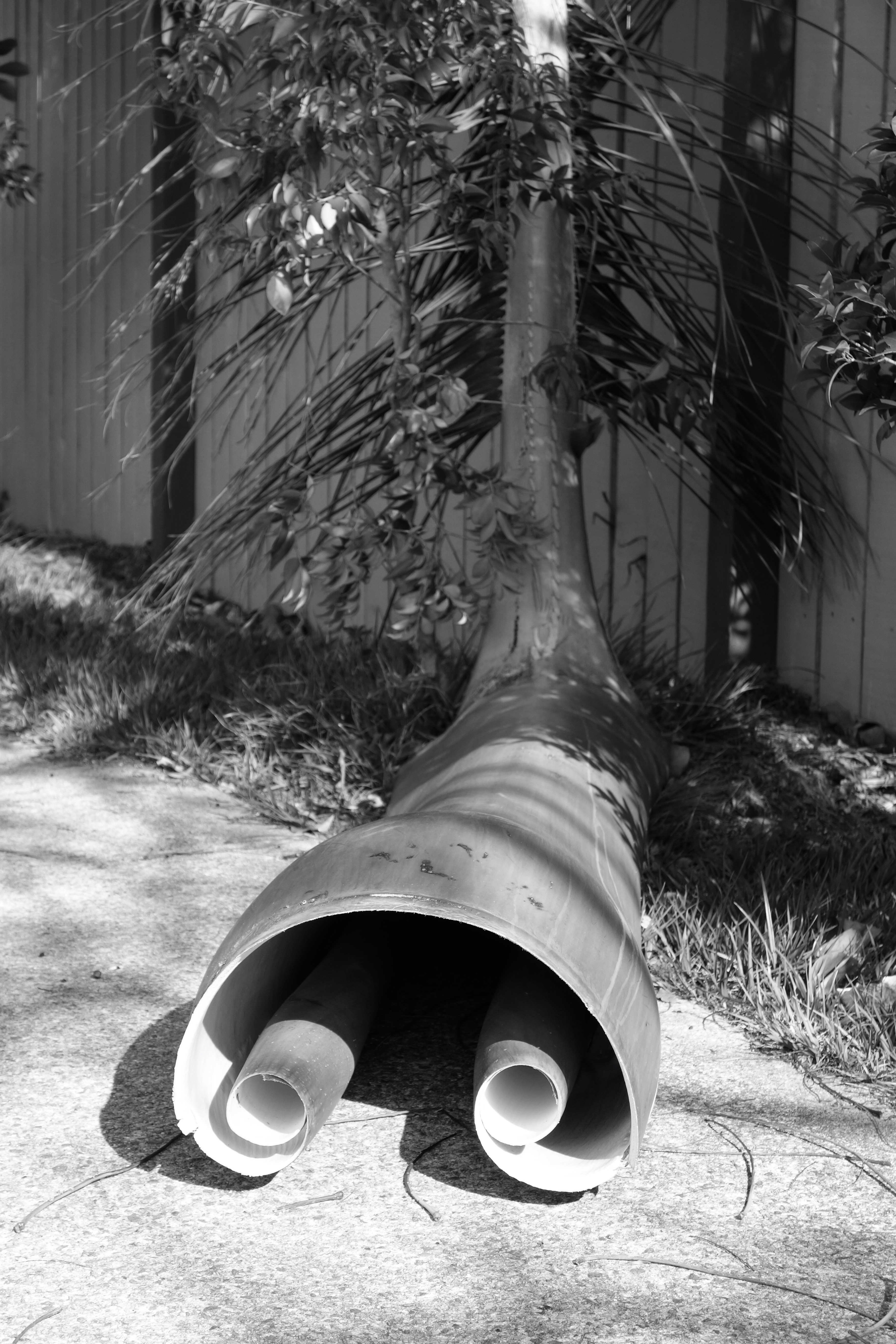
Inspiration from anevolvingscientist.org (on his Facebook page).
Black and white photos of my everyday life. Day two: Fountain.
The Captain Cook Memorial Jet in Lake Burley Griffin, Canberra, shoots water 152 metres high for about four hours a day. In moderate wind the fountain spray forms a transparent curtain across the lake. In strong wind it’s turned off to prevent a water hazard on the nearby bridge.
Photo taken during a visit this week to the National Library to read Pierrots on the Stage of Desire, a history of 19th-century French pantomime.
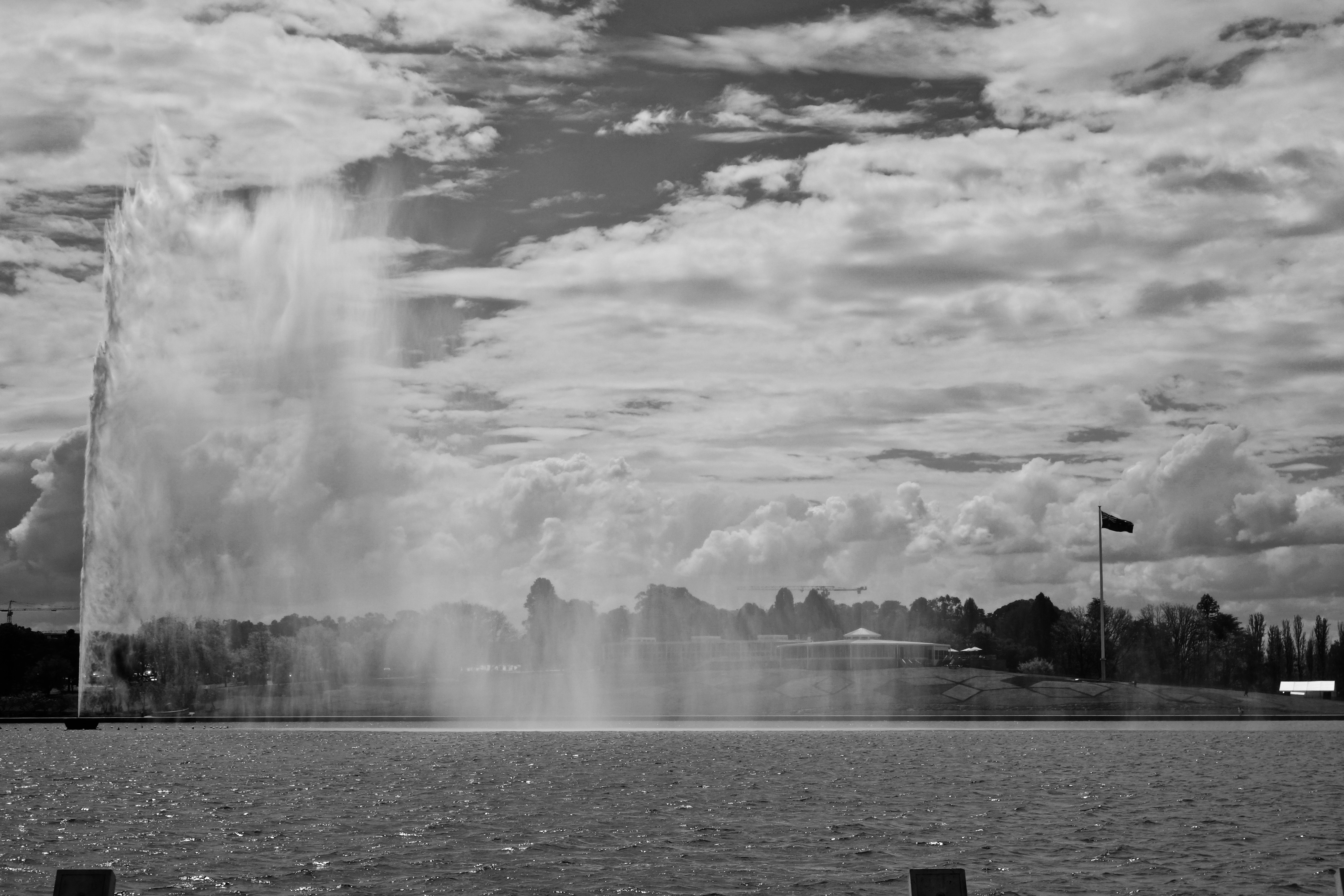
Inspiration from anevolvingscientist.org (on his Facebook page).
Five photos of my everyday life, in black and white. Day one, fungus.
My gardens have just had a professional makeover. The gardener re-made four identically shaped gardens with the same range of plants repeated in each. But in one of them, under and around a grevillea, a leathery tan fungus is growing, apparently not a bad thing. It’s possibly a saprophytic cup fungus feeding on the rotting forest litter used as mulch. I just spotted it a couple of days ago. It’s a real head-turner and typically evokes this reaction: Whoa, what’s that?
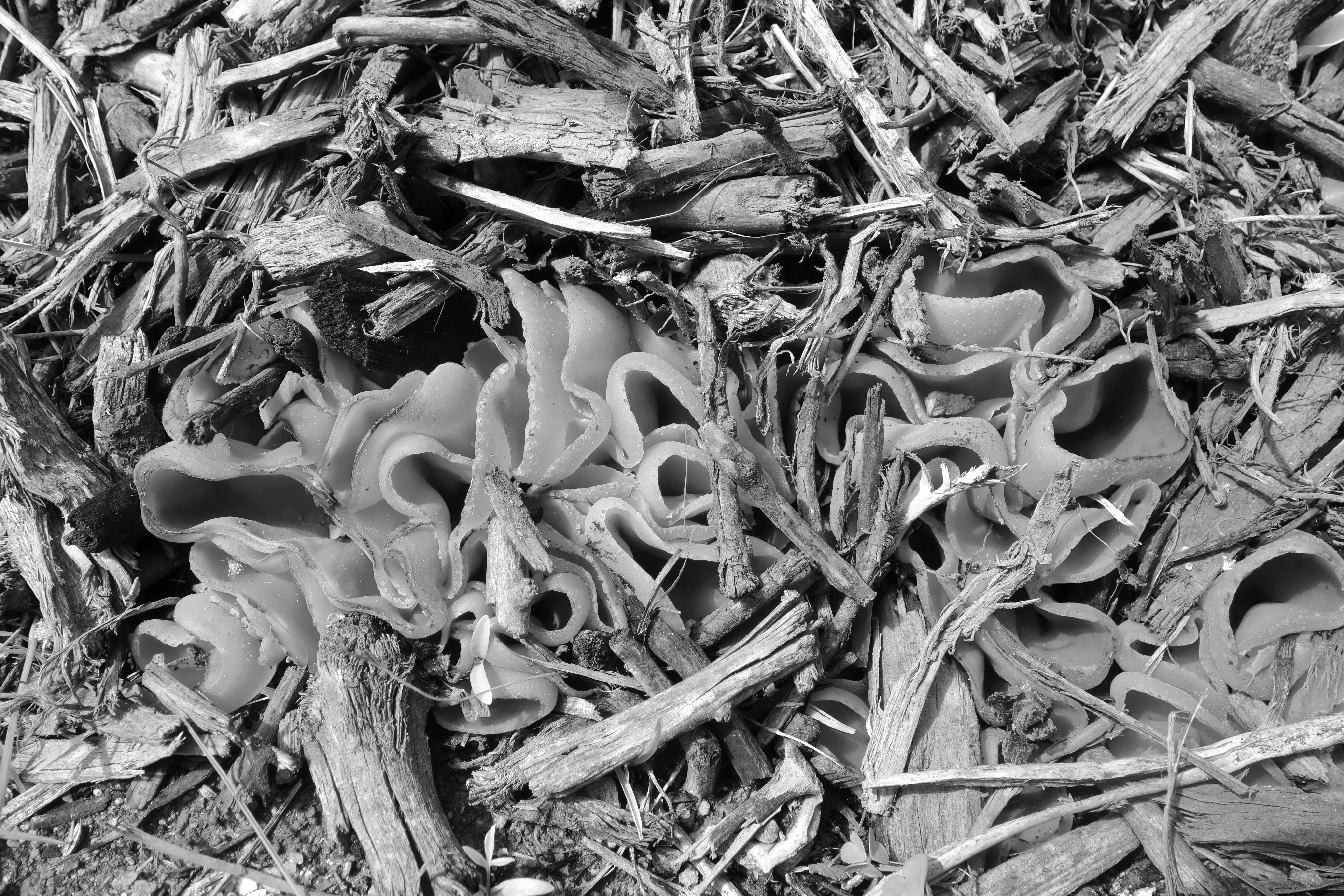
Ken, anevolvingscientist.org, came up with this photo challenge. Many thanks!
*
Hiding behind the hedge, the wolf was patiently watching the house.
Opening line, The Wolf, Marcel Aymé (my translation)

The Wolf is a children’s story written by Marcel Aymé in 1932. Aymé is more famous for his science fiction/fantasy stories, particularly about characters who have a supernatural ability, like walking through walls or existing only every second day. This story is about a wolf who convinces two small blonde girls (wolves prefer blondes) to let him into the house while their parents are out. The ending is a happy one, for the girls.
The translation is mine. One day it might be published.
*
At least two hundred poor beggars were counted sleeping out on the pavements of the main streets of Sydney the other night – grotesque bundles of rags lying under the verandahs of the old Fruit Markets and York-street shops, with their heads to the wall and their feet to the gutter.
‘Dossing Out’ and ‘Camping’, Henry Lawson, 1896
The economic recession and strikes of the early 1890s forced a lot of Australia’s country people off the land and into urban areas, only to find there were no jobs there either. ‘Dossing Out’ and ‘Camping’ is a short story that paints a clear picture of the poverty of poor beggars who had been sleeping in the park but were driven out by rain, onto the streets, under the verandahs.
The title refers to ‘dossing out’ in the city and ‘camping’ in the bush, two different ways of living with no money. In the bush, Lawson writes, you can light a fire, boil the billy, make tea, catch a sheep and fry a chop, wash your shirt, wash yourself, whistle and sing by the camp fire, breathe fresh air and make poetry.
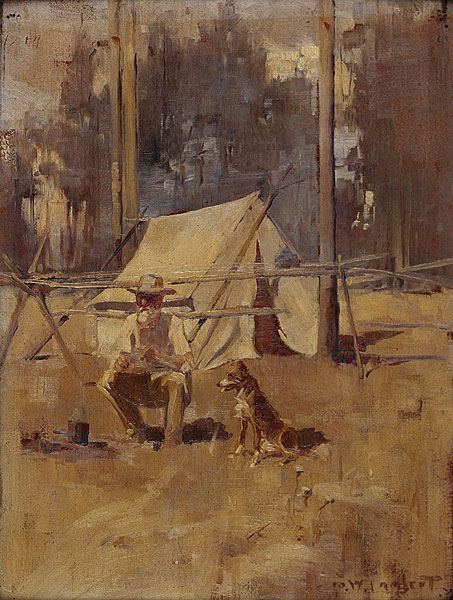
In the city, when you doss out, there’s no possibility of lighting a fire to cook over. And a man is generally too hungry to make poetry.
The story ironically appeared in the collection While the Billy Boils.
*
When the queen of Sheba heard about the fame of Solomon and his relation to the name of the Lord, she came to test him with hard questions.
1 Kings 10:1
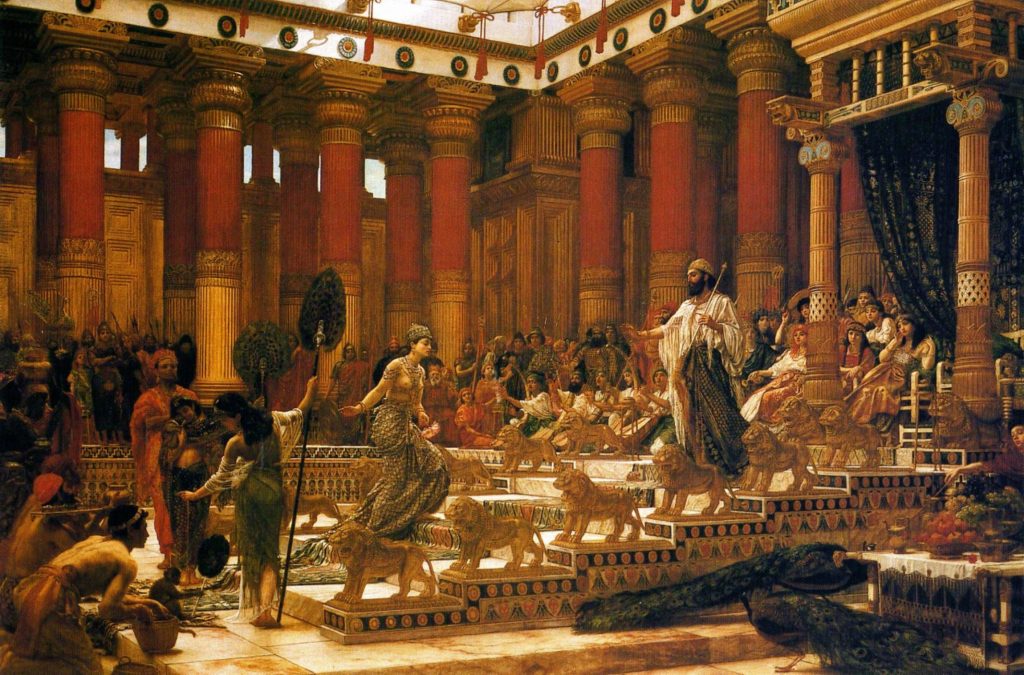
I have this painting on my living room wall. When I first saw it in the Art Gallery of NSW I fell in love with it, already being enamoured of Orientalism with its hot, deep colours and ancient drama and mystery. This painting is massive; it’s exhibited in an equally impressive broad gold frame, but even unframed, the painting measures 2.3 x 3.5 metres. Perhaps it was the size of it that had me suspending disbelief and imagining myself as a spectator in King Solomon’s court. I bought the print from the gift shop, had it framed, and over the years have put it up and taken it down. I’ve developed an occasional discomfort with the bare-breasted queen, lower in the space than the king, and approaching only because he bids her. Right now it’s up.
However, reading the opening line of this biblical story leaves me more impressed with the Queen of Sheba. After all, she was there to test the king with ‘hard questions’. This is good, it got me in, it’s exactly the kind of opening line that makes us read on.
She is, in a few alternative English translations of just this one verse, portrayed as quite a powerful and mysterious queen. Some translators have her trying him with subtle questions, with difficult questions, with riddles, or with enigmas. I particularly like this one in the Wycliffe bible:
But also the queen of Sheba, when the fame of Solomon was heard, came in the name of the Lord to assay him in dark and doubtful questions.
Can you imagine what kind of question would be dark and doubtful? Edward Poynter was evidently taken in by this opening line, whichever version he read (probably the King James bible). From the first, he was drawn into the story and stimulated to paint it for us all. May you read a great opening line like this, and may it lead you to an even greater achievement.
*
Who’ll show a child just as it is?
From the fourth Duino Elegy, Rainer Maria Rilke
– translated by J.B. Leishman and Stephen Spender, an epigraph opening Sophie’s Choice by William Styron
This post is about a great opening line, but also about a great title.
When I was twenty, I watched a movie with Mum. An average Friday night movie, with cups of tea, relaxing together in the loungeroom I spent so much of my life in. The movie was Sophie’s Choice, with Meryl Streep in the role of Sophie, based on the novel by William Styron. When the story turned to the Nazi concentration camp in Auschwitz and the gassing and systematic elimination of Jews, I turned to Mum and said “Did this really happen?”. Of course she said yes, but nothing more.
There had been plenty of talk in our household about wars. My father was a soldier in the second world war, his father was in the first. Various uncles and older relatives had also played their part. I had only heard them talk about fighting against the Germans, you know, gunfights and bombings on battlefields. Why had I never heard about concentration camps and the wilful destruction of Jews and various other unwanted people? Mum didn’t say much after this (she never talked about anything dark) and I was so horrified at my fellow humans that I asked no more questions.
The words Sophie’s Choice will always remind me of that night, that piece of knowledge I acquired. I’ve since read the book, a hard read, some of which I skipped. The climax is in this exchange between a Nazi doctor and Sophie, his victim, a mother of two:
…the doctor said, ‘You may keep one of your children.’
‘Bitte?’ said Sophie.
‘You may keep one of your children,’ he repeated, ‘the other one will have to go. Which one will you keep?’
‘You mean, I have to choose?’
‘You’re a Polack, not a Yid. That gives you a privilege – a choice.’
Her thought processes dwindled, ceased. Then she felt her legs crumple. ‘I can’t choose! I can’t choose!’
This week I was casually browsing The Canberra Times when I came across the entertainment guide, with this on the cover:
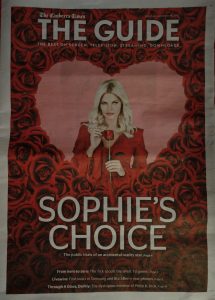
The article inside about a woman named Sophie Monk is written by the journalist Michael Lallo. The opening line is not one of the great ones that will make my collection, but is worth quoting here:
When Sophie Monk did her first bikini shoot, for a men’s magazine, she cried in the bathroom.
And what choice did this particular Sophie have to make? Lallo writes:
She began to question previous choices. ‘Why not?’ she thought, when Playboy made its umpteenth approach.
Michael Lallo has taken Styron’s title and made it his own, rather than making up his own. It might be forgivable if the topic of his story had some relevance to the original. I guess he used it because it had already made a big impact, and I suppose it got my attention. If Lallo wanted me to reflect on life, then it worked. I reflected immediately on literary appropriation and Nazis torturing and gassing people.
This is a writing lesson for me. Be careful not to inappropriately use analogies.
***
At dusk they pour from the sky.
Opening line, All the Light We Cannot See, Anthony Doerr
There’s a chair at the kitchen table that I sit on for hours some days. Reading my own work forwards and backwards – backwards is a trick I learned in translation school – I’m forever searching for better ways to say everything. To get an editor’s tick, I have to stay on the chair. So I stay until the job’s done, or until life interferes.
Right now, a book of French fairy tales keeps me here. The repetitive acts of translating, reading, editing and reading again, in the hope of arriving at the perfect story, are driving me into an unproductive blankness. So here I am, writing on this blog, writing just for the distraction of it, analysing what makes writing work well.
My story has to make it further than an editor’s slush pile, and one element, more than any other, is the lure: the very first line. If it’s not great, he might not read the second.
Once, because I was 54 years old, I wrote 54 blog posts about opening lines (click the category link…). It was a thoroughly enjoyable exercise that taught me a lot. Now, as I have in life, I’m going on from 54 to see how many more I can find. It won’t be simple, for not all the stories on my bookshelves begin with a great opener. But I’ll challenge myself even further, now and then, to find great translated opening lines. You know, the sort of oft-quoted line such as “All happy families are alike but an unhappy family is unhappy after its own fashion.” Anna Karenina by Leo Tolstoy, translated by Rosemary Edmonds.
Today I won’t begin with translation but with a novel originally written in English. I found this great opener that immediately had me hooked in All the Light We Cannot See by Anthony Doerr, on a page entitled ‘Leaflets’:
At dusk they pour from the sky.
The story is set in World War Two in Saint-Malo, Brittany, France. Fascinating. A page-turner. Great to read aloud.
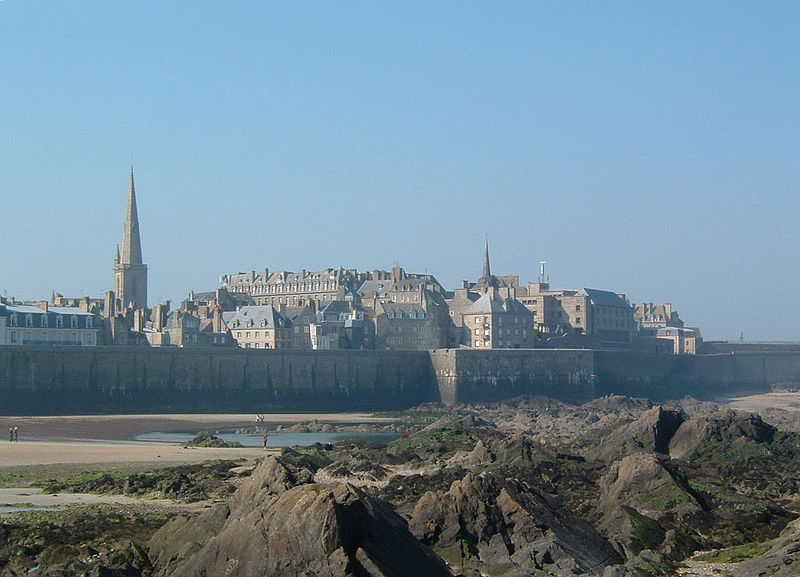
It shouldn’t be hard to get to 100 (blog posts that is…). I’ll write about great opening lines whenever I need a break, which happens every few days! Please tell me if you know of any yourself!
Header credit: Jean-Christophe Windland, on Wikimedia Commons
***
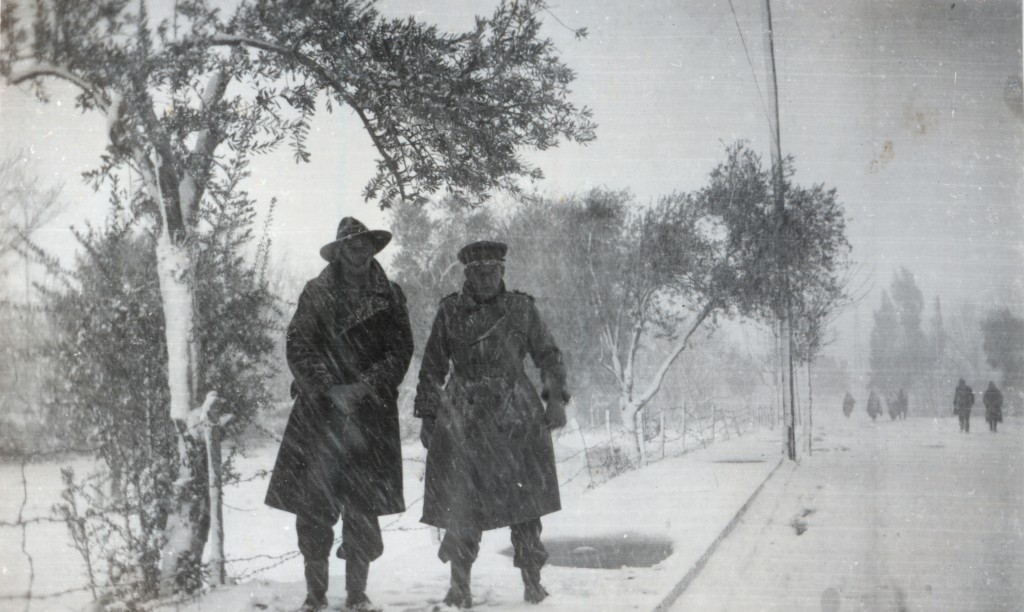
Some years ago I scanned hundreds of photos from an album my father brought back from the Middle East in 1942. The original snaps are small, about 2″ x 3″, so I’m fascinated by the detail I now see in these scanned and enlarged photos, such as the people on the right in the image above. The caption for this picture says “Col. Gee, Syria”. Nothing about the other guy. However, it’s uncertain whether it was taken in Syria or Lebanon. The photo below, the ski school for the soldiers, is marked as located in Syria when in fact it was in Lebanon.
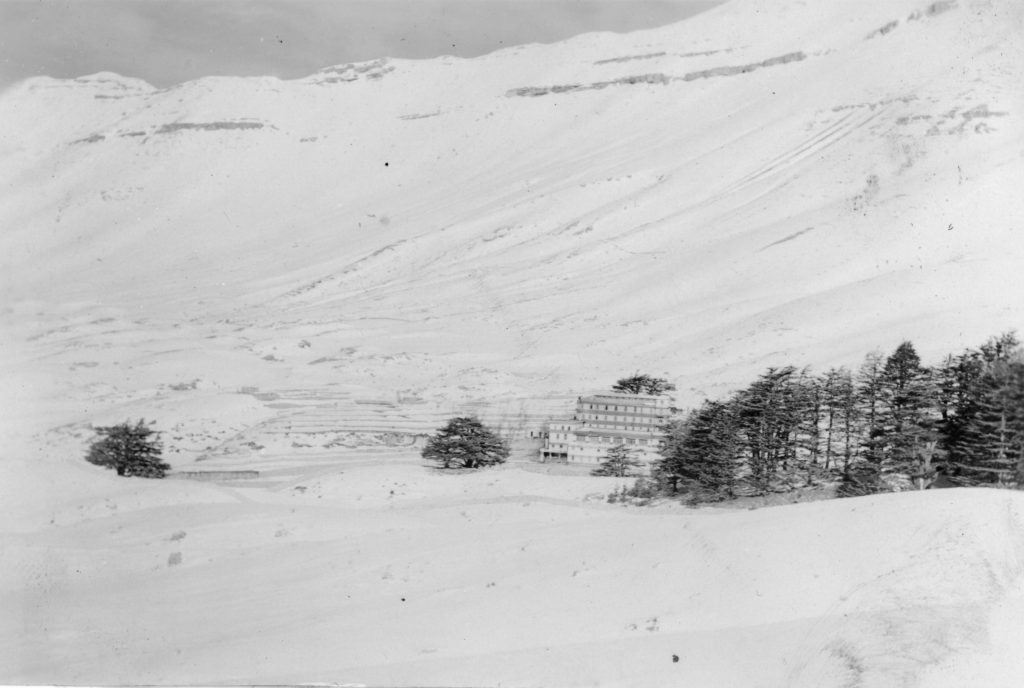
Easy mistake to make, since the Australian soldiers were sent to train in Syria in the winter of 1941/42, but from there they went to Lebanon to train to fight in snow country. A disused chalet near Bcharre in the Lebanon ranges was turned into a ski school. It was pretty hard on the Australians, used to extreme heat but not extreme cold.
So much snow. The magnificent cedars of Lebanon form the only contrast in this black and white image.
*****